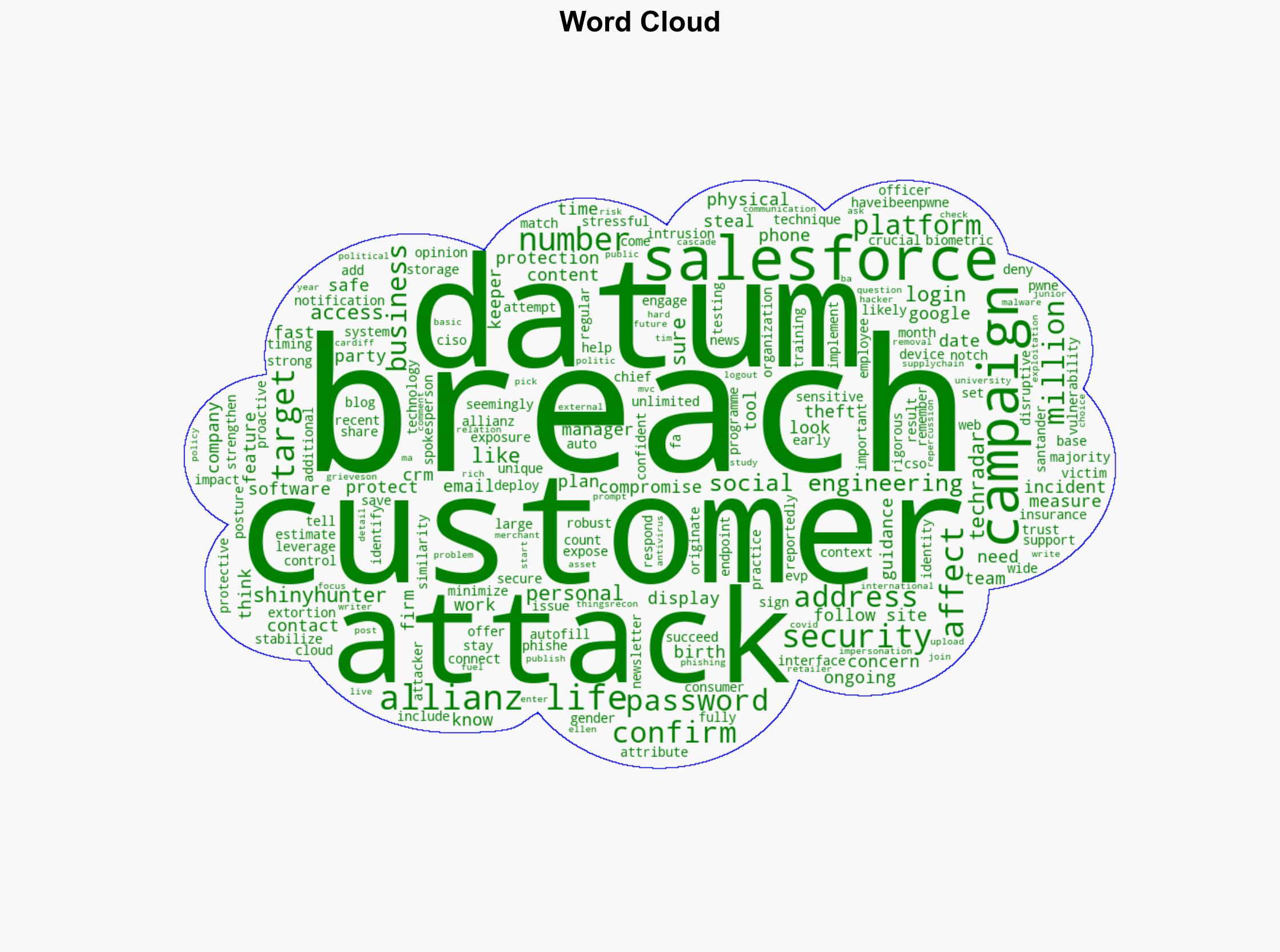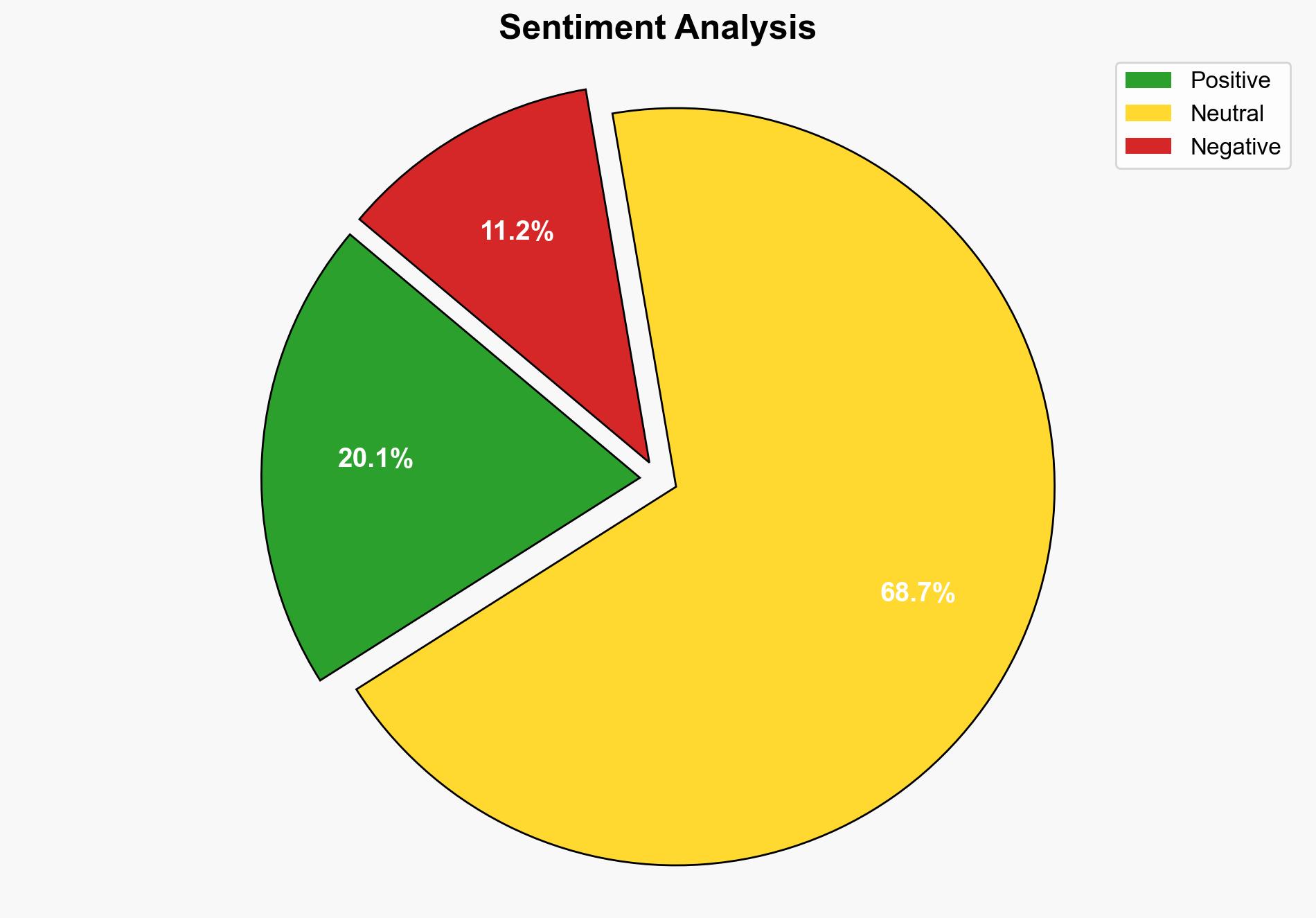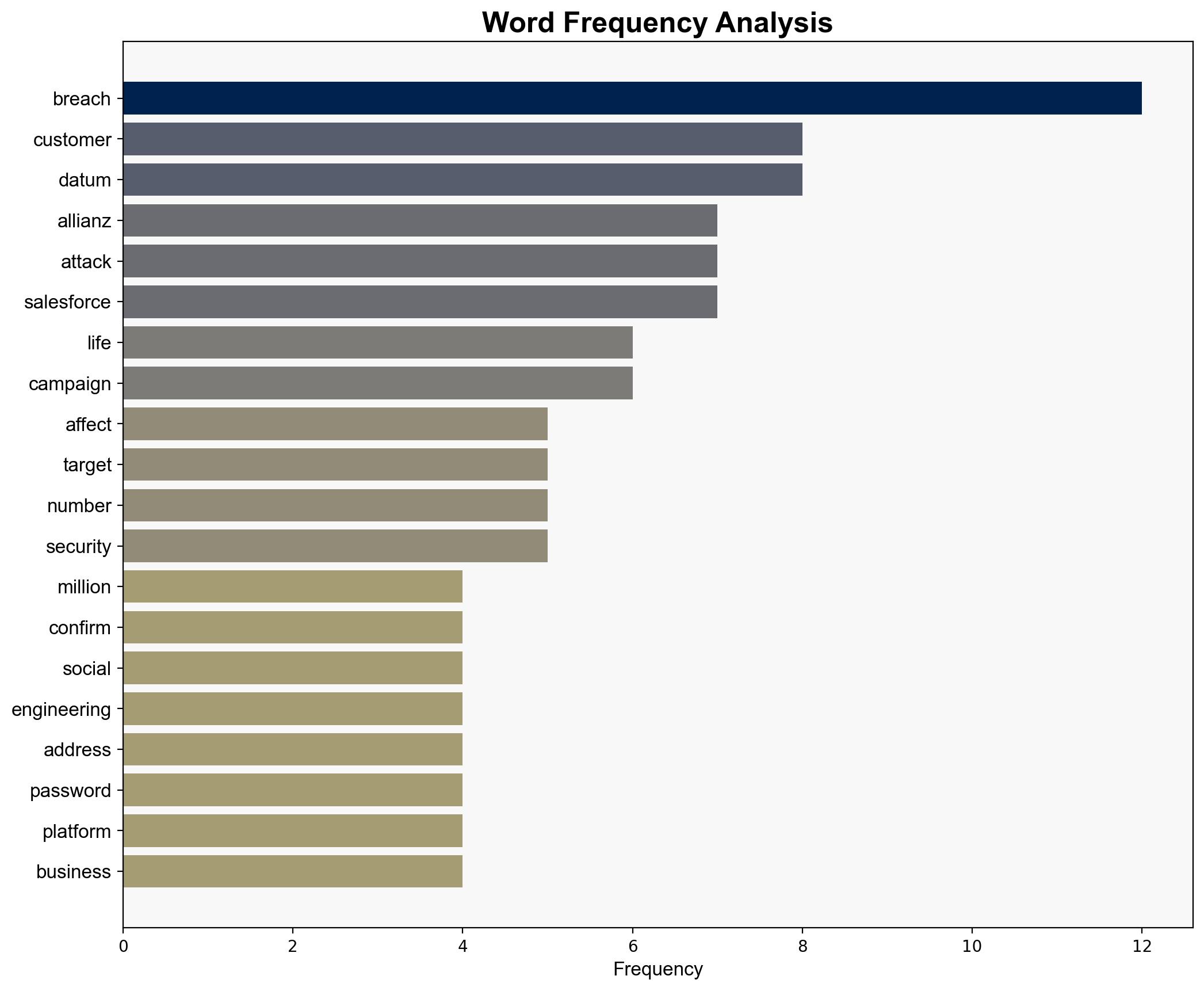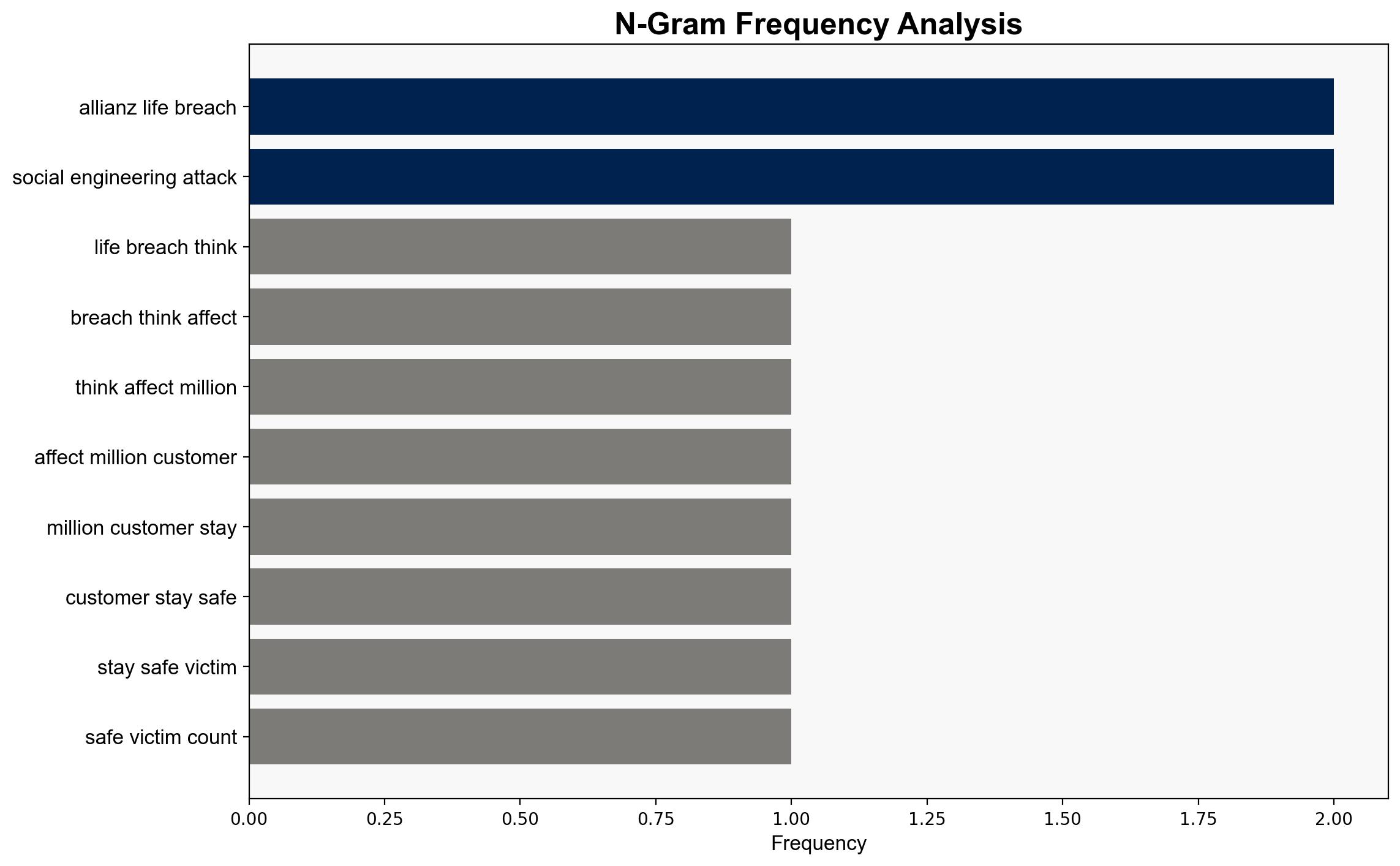Allianz Life breach now thought to have affected 11 million customers – here’s how to stay safe – TechRadar
Published on: 2025-08-19
Intelligence Report: Allianz Life breach now thought to have affected 11 million customers – here’s how to stay safe – TechRadar
1. BLUF (Bottom Line Up Front)
The breach affecting Allianz Life, potentially impacting 11 million customers, is likely part of a broader campaign exploiting vulnerabilities in cloud-based CRM systems. The most supported hypothesis is that the breach is a result of sophisticated social engineering attacks targeting Salesforce users. Confidence level: Moderate. Recommended action includes enhancing cybersecurity training and implementing robust access controls.
2. Competing Hypotheses
1. **Hypothesis A**: The breach is primarily due to a targeted social engineering campaign by the group “ShinyHunter,” exploiting vulnerabilities in Salesforce’s CRM platform.
2. **Hypothesis B**: The breach is part of a larger, coordinated cyber-attack campaign targeting multiple firms, with Allianz Life being one of many victims, possibly due to a systemic vulnerability in cloud-based systems.
Using Analysis of Competing Hypotheses (ACH 2.0), Hypothesis A is better supported by the evidence, given the specific mention of social engineering techniques and the timing similarity with other known ShinyHunter attacks. Hypothesis B, while plausible, lacks direct evidence linking it to a broader systemic vulnerability.
3. Key Assumptions and Red Flags
– **Assumptions**: Both hypotheses assume that the breach was facilitated by human error or system vulnerabilities. Hypothesis A assumes the attackers had specific knowledge of Salesforce’s CRM system.
– **Red Flags**: The denial by Salesforce of any platform compromise raises questions about the true vector of the attack. The lack of detailed technical information on how the breach occurred is a significant blind spot.
4. Implications and Strategic Risks
The breach could lead to significant reputational damage for Allianz Life and potential financial losses due to customer attrition and legal liabilities. If part of a larger campaign, it may indicate a trend of increasing sophistication in cyber-attacks targeting cloud-based services, posing a broader threat to industries reliant on such platforms. The psychological impact on customers, leading to diminished trust in digital services, is also a concern.
5. Recommendations and Outlook
- Enhance employee training on recognizing and responding to social engineering attempts.
- Implement multi-factor authentication and robust access controls for all CRM systems.
- Conduct regular security audits and penetration testing to identify and mitigate vulnerabilities.
- Scenario Projections:
- Best Case: Improved security measures prevent further breaches, restoring customer trust.
- Worst Case: Continued breaches lead to significant financial and reputational damage.
- Most Likely: Incremental improvements in security reduce but do not eliminate future risks.
6. Key Individuals and Entities
– Allianz Life
– ShinyHunter (cyber-attack group)
– Salesforce
7. Thematic Tags
national security threats, cybersecurity, data breach, cloud security, social engineering




